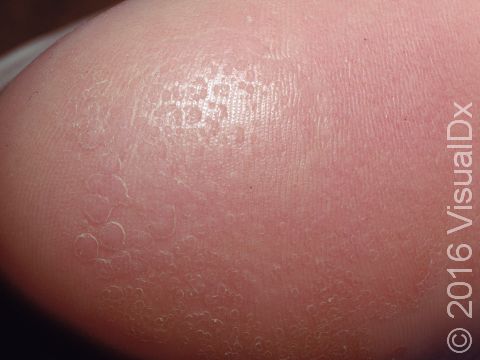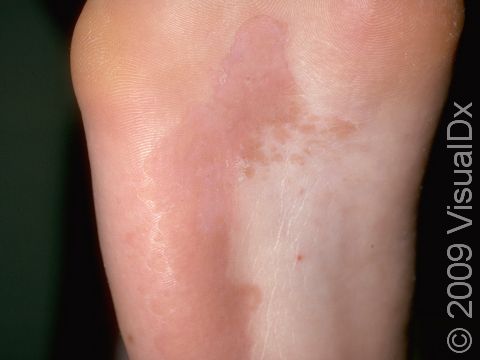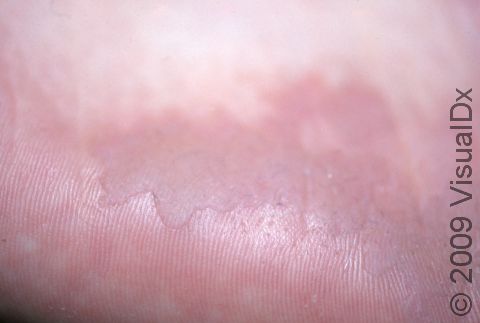Pitted Keratolysis
Who's At Risk?
Pitted keratolysis can occur in people of any race / ethnicity, age, or sex, although it is more common in males. Conditions that make people more likely to develop pitted keratolysis include:
- Having sweaty feet.
- Hot or humid weather.
- Wearing unventilated footwear, such as rubber boots or vinyl shoes.
Signs & Symptoms
The most common locations for pitted keratolysis include:
- Pressure-bearing sites on the soles of the feet, especially the heels.
- Non-pressure-bearing sites on the soles of the feet.
- The palms of the hands.
In these areas, the condition appears as small (0.5-5 mm), shallow pits in the top layer of skin. These pits can sometimes form into larger, crater-like lesions. There may be soft, wettish (macerated) white patches around the pits.
Pitted keratolysis may occasionally be itchy or painful. The foot odor sometimes associated with pitted keratolysis may be socially embarrassing.
Self-Care Guidelines
To help resolve pitted keratolysis and prevent it from coming back, keeping the feet as dry as possible is important. It may help to have your child:
- Wear absorbent cotton socks and change them frequently.
- Wash their feet with antibacterial soap (eg, Dial antibacterial bar soap) or antiseptic cleanser daily.
- Apply antiperspirant to the soles of the feet daily to minimize sweating (eg, SweatBlock clinical strength antiperspirant wipes).
- Minimize the use of tight-fitting, unventilated footwear. (Try sandals, if possible.)
- Avoid wearing the same pair of shoes multiple days in a row.
- Avoid sharing towels and footwear with others.
Treatments
Your child’s medical professional may prescribe:
- A topical antibiotic such as erythromycin, clindamycin, mupirocin, fusidic acid, or benzoyl peroxide.
- Oral antibiotics such as erythromycin.
- Further measures to decrease moisture / sweating, such as a prescription antiperspirant containing aluminum chloride.
With some combination of these treatments, the skin lesions and odor of pitted keratolysis usually disappear within 4 weeks.
Visit Urgency
See your child’s medical professional if attempts to minimize moisture do not improve the condition or if the affected areas are painful, itchy, or cause social embarrassment, such as from foul odor.
References
Bolognia J, Schaffer JV, Cerroni L. Dermatology. 4th ed. Philadelphia, PA: Elsevier; 2018.
James WD, Elston D, Treat JR, Rosenbach MA. Andrew’s Diseases of the Skin. 13th ed. Philadelphia, PA: Elsevier; 2019.
Kang S, Amagai M, Bruckner AL, et al. Fitzpatrick’s Dermatology. 9th ed. New York, NY: McGraw-Hill Education; 2019.
Paller A, Mancini A. Paller and Mancini: Hurwitz Clinical Pediatric Dermatology. 6th ed. St. Louis, MO: Elsevier; 2022.
Last modified on September 22nd, 2023 at 2:53 pm

Not sure what to look for?
Try our new Rash and Skin Condition Finder


